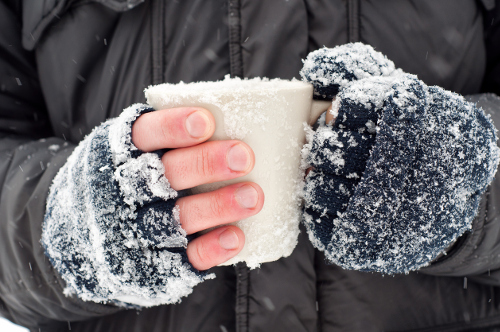 Frostbite can be a serious consequence of exposure to extreme cold temperatures, but there is another danger you should be aware of called chilblains.
Frostbite can be a serious consequence of exposure to extreme cold temperatures, but there is another danger you should be aware of called chilblains.
This skin condition occurs when the blood vessels become injured from the cold. It is also known as pernio or perniosis, and while it is a treatable condition, it does present with severe pain and risk for infection.
This form of inflammatory disorder can cause permanent damage if infection sets in. We will look at what causes chilblains and possible home remedies.
What Are Chilblains (Pernio)?
A medical pernio or chilblains definition can be described as inflammation of the tiny blood vessels, known as capillaries, that is stimulated by exposure to cold air. As the blood vessels attempt to warm, the outer skin surface of the fingers, toes, heels, nose, and ears become painful, red, itchy patches of skin. The skin becomes swollen with blisters and susceptible to infection. Infection can lead to serious complications, including damaging the tissue permanently. This will allow chilblains to recur every time you are exposed to the cold.
What Are the Causes of Chilblains (Pernio)?
Your body reacts to the cold temperatures in various ways. Chilblains can be an annual annoyance for many people, as in certain climates the temperature drops and remains low for many weeks and months. Even the damp, cold weather seen in coastal communities can have a great effect on certain people.
Perniosis is the inflammation of the tissues that occurs when the blood flow is rapidly increased to warm the cold skin. The cold causes the blood vessels near the surface of the skin to constrict. Once heat or a form of warmth is directed onto the cold skin, the blood flow speeds up and the vessels allow it to leak into the tissues.
For the cold to affect you in such a way, the following conditions may be present:
- Chilblains family history
- Poor diet
- Consistent exposure to the cold
- Poor circulation
- Tobacco use
- Tight-fitting footwear
- Lupus
- Raynaud’s Phenomenon
Signs and Symptoms of Chilblains (Pernio)
The cold exposure can affect your skin and blood vessels in varying ways. The chilblains symptoms usually occur hours after initial exposure. You can expect:
- Burning sensation of affected area
- Itchiness
- Swelling
- Redness
- Bluish hue
- Blisters
- Infection signs
Chilblains or Perniosis Treatment
Most cases of chilblains require no treatment or medical attention because it can clear up on its own. It may take one to three weeks to heal by avoiding cold temperatures. The following techniques should be followed every time you are in cold weather, especially those living in northern climates. Once it takes effect, there are natural chilblains treatment options.
- Keep body warm, specifically affected areas.
- Slowly warm up the body.
- Use lotion to keep affected area moisturized.
- Immediately treat any lesions or blisters.
For any patches of skin that do not heal within two weeks, medical treatment is available. You may be prescribed topical corticosteroid cream or a blood pressure medication to open the narrow blood vessels.
How to Prevent Chilblains (Pernio)
Knowing how to prevent the chilblains condition is half the battle as it can also help treat the condition in case you do contract it.
- Avoid exposure to cold temperatures when possible.
- Keep moving to promote good blood flow when in the cold.
- Maintain moisturized skin.
- Wear footwear that fits properly.
- Keep hydrated and warm with hot drinks.
- Wear gloves or mittens on hands; use handwarmers if pernio is recurring.
- Keep feet warm with insulated socks.
- Use a hat, scarf, and earmuffs when in the cold.
- Layer clothing to maintain body heat without becoming overheated.
Chilblains is a mild and self-treating condition that affects the blood vessels and surrounding tissues. Triggered by extreme cold temperatures, the red patches on the skin surface can become itchy and painful. If the presence of blisters is disturbed, there is a chance of infection that can permanently damage the blood vessels. As long as you avoid infection, the chilblains will usually heal without any intervention within two weeks. Limiting your exposure to the dampness and cold of your environment can help to lessen symptoms and possibly prevent recurrence.
Sources:
“Chilblains,” NHS; http://www.nhs.uk/Conditions/chilblains/Pages/Introduction.aspx, last accessed June 21, 2017.
“Chilblains,” Patient Info; https://patient.info/in/health/chilblains, last accessed June 21, 2017.
“Perniosis,” Rare Diseases; https://rarediseases.org/rare-diseases/perniosis/, last accessed June 21, 2017.
